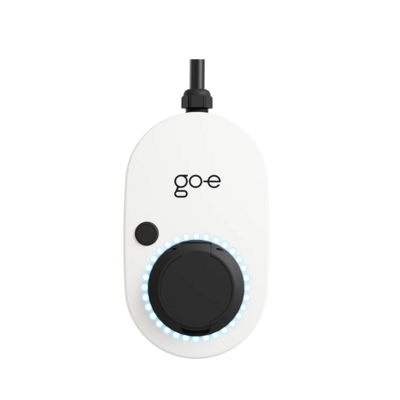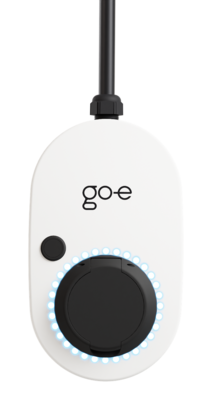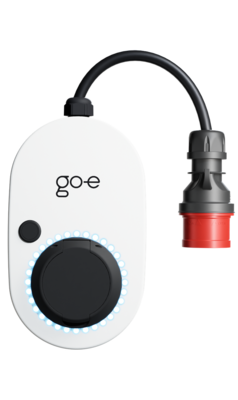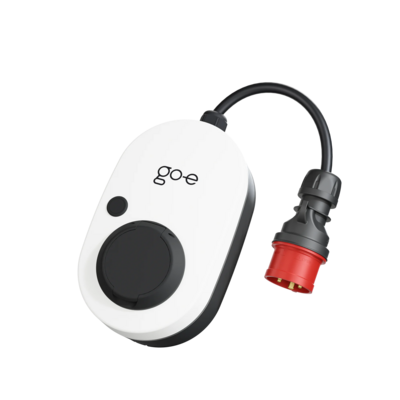How to Charge an Electric Car at Home?
Last updated:
Charging at public charging stations is more expensive than charging at home. This is exactly why EV owners often choose to charge at home.
But how do you charge your electric car at home? What options are there and what are their advantages and disadvantages?
We'll explain that to you in this article.
Do you want to allow Integration of youtube videos?
Allows the playback of videos, that are hosted on youtube.com. By allowing this feature, you accept the privacy agreement of google.
How Can You Charge Your Electric Car at Home?
- Possibility #1: You charge your electric car in mode 2 at a normal household socket.
- Possibility #2: You buy a wallbox that allows you to charge at up to 22 kW.
Charging an Electric Car at Home from a Household Socket
If you want to charge your car from a normal socket, you can either use an emergency charging cable with ICCB, i.e. a charging cable equipped with a control box, or you can charge with a mobile wallbox, such as the go-e Charger Gemini flex and a suitable adapter.
In both cases you are charging in mode 2.
The disadvantage of charging from a normal socket is that charging can take up to 24 hours. This type of charging is therefore usually very impractical for everyday use.
Charging an Electric Car at Home with a Wallbox
If you want to charge much faster, we suggest installing a wallbox with 11 kW or 22 kW charging power at your home.
Whether you need an 11 kW or 22 kW wallbox depends on various factors, such as your connection power, the charging power of your electric vehicle or the charging cable.
Not all Wallboxes are the Same
You can find simple and smart wallboxes in specialist shops or from your electrician.
Simple Wallbox
A simple wallbox is relatively straightforward. It can communicate with the electric car during the charging process and adjusts the current to be supplied to the vehicle’s on-board charger and the current state of the battery. But that's about it.
Smart Wallbox
Smart wallboxes, on the other hand, such as the go-e Charger, can do much more and make charging your electric car more convenient, economical and sustainable. For example, they allow you to use electricity from a photovoltaic system, flexible electricity prices or load management.
These are all comfort functions that electric car owners should not normally be without.
A smart wallbox also allows you to charge electricity from a solar system, which is of course particularly exciting in times of high electricity prices.
Installation of the Wallbox to Charge Your Car at Home
You usually install your wallbox in the garage or driveway.
How it is installed in detail depends on the charging station and whether it is a stationary or mobile wallbox.
A stationary wallbox, such as our go-e Charger Gemini, is only suitable for local use. It is therefore permanently mounted on the wall and must be connected to the building's power grid by an electrician.
The mobile wallbox, on the other hand, such as our go-e Charger Gemini flex, can simply be mounted on the wall and put into operation yourself. If your socket meets modern standards, you don't need an electrician. And, as the name suggests, it is mobile because you can simply unhook it. The charging station is therefore a valuable companion at home or on the road. This gives you a lot of flexibility and freedom, as you can take the mobile wallbox with you on trips or to friends and family at any time.
In modern charging stations, a DC fault protection should be installed. If this is not the case, direct current fault protection should be installed in modern charging stations. If this is not the case, a type B RCD is required on the building side.
The go-e Charger already has an integrated DC protection module. It switches off the charging station in the event of a fault current caused by the electric vehicle. On the building side, an RCD type A must be installed and a miniature circuit breaker must be installed upstream. The local installation regulations must be observed. Miniature circuit breakers with characteristic B or C for 16 or 32 amperes are permissible.
go-e Charger Gemini 11 kW

The compact wallbox for stationary use, at home or at the workplace. Simple installation, intuitive operation and smart comfort functions. Charging power from 1.4 kW to 11 kW. 1-phase or 3-phase charging.
go-e Charger Gemini 22 kW

The compact wallbox for stationary use, at home or at the workplace. Simple installation, intuitive operation and smart comfort functions. Charging power from 1.4 kW to 22 kW. 1-phase or 3-phase charging.
go-e Charger Gemini flex 11 kW

The intelligent wallbox can be used both stationary in the wall bracket and mobile. No electrician is required for the installation of the charging station. Charging power from 1.4 kW to 11 kW. 1-phase or 3-phase charging.
go-e Charger Gemini flex 22 kW

The intelligent wallbox can be used both stationary in the wall bracket and mobile. No electrician is required for the installation of the charging station. Charging power from 1.4 kW to 22 kW. 1-phase or 3-phase charging.
The Price of a Wallbox
There is no price difference between the go-e Charger Gemini and Gemini flex variants. There is only a minimal difference between the 11 kW and the 22 kW wallbox.
Compared to many other wallboxes, the go-e Charger offers excellent value for money. For example, the go-eCharger HOMEfix 11 kW, the predecessor version of the go-e Charger Gemini, took first place as the best and the cheapest product in the Wallbox Test 2022 by ADAC, ÖAMTC and Stiftung Warentest.
This proves that good quality does not have to be expensive.
